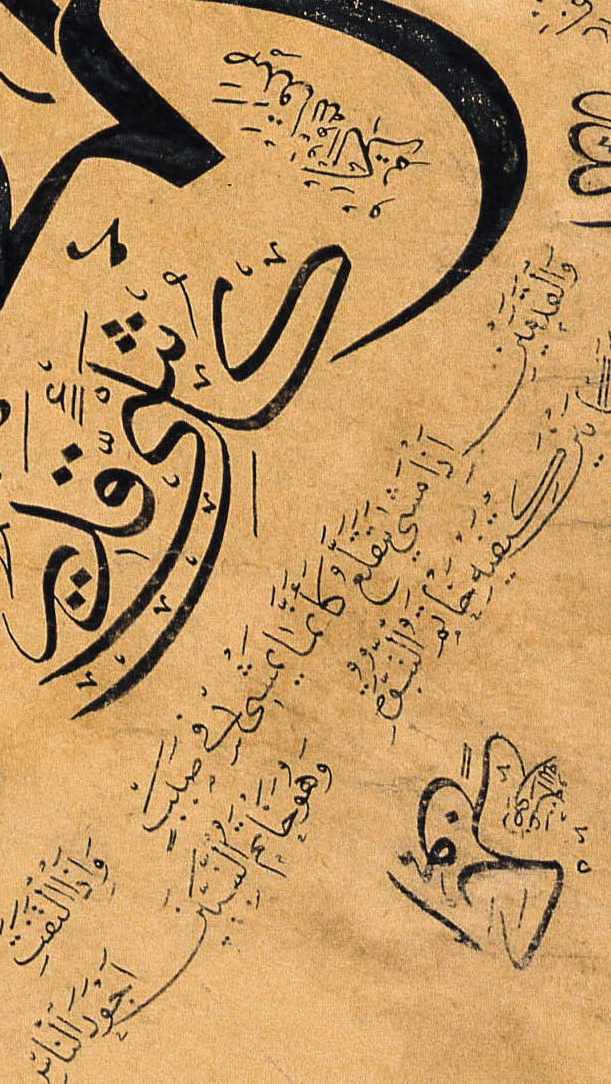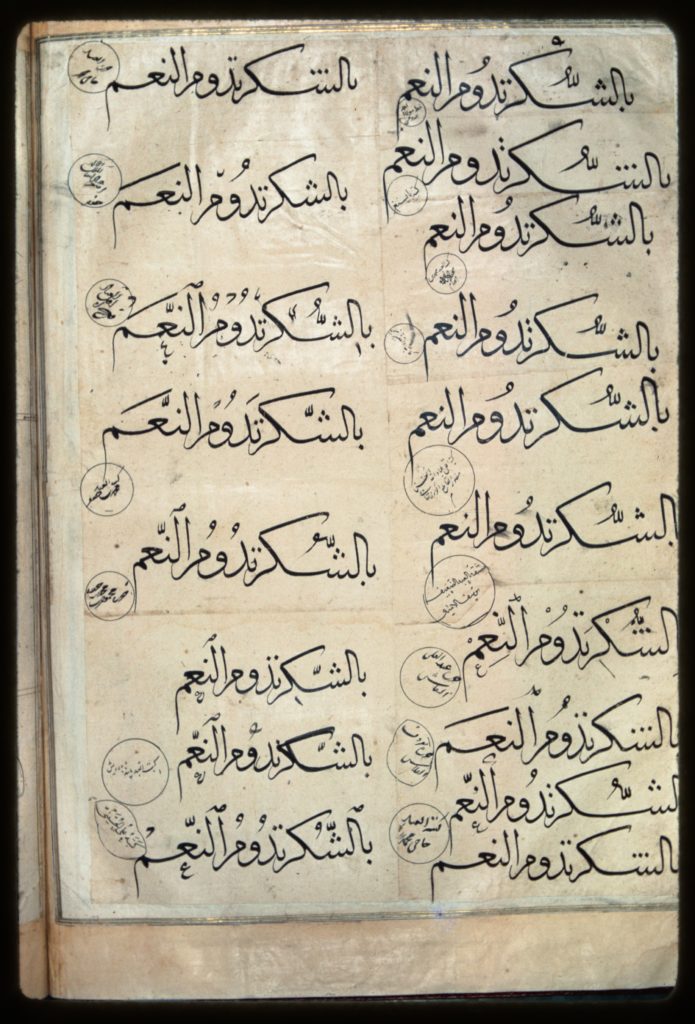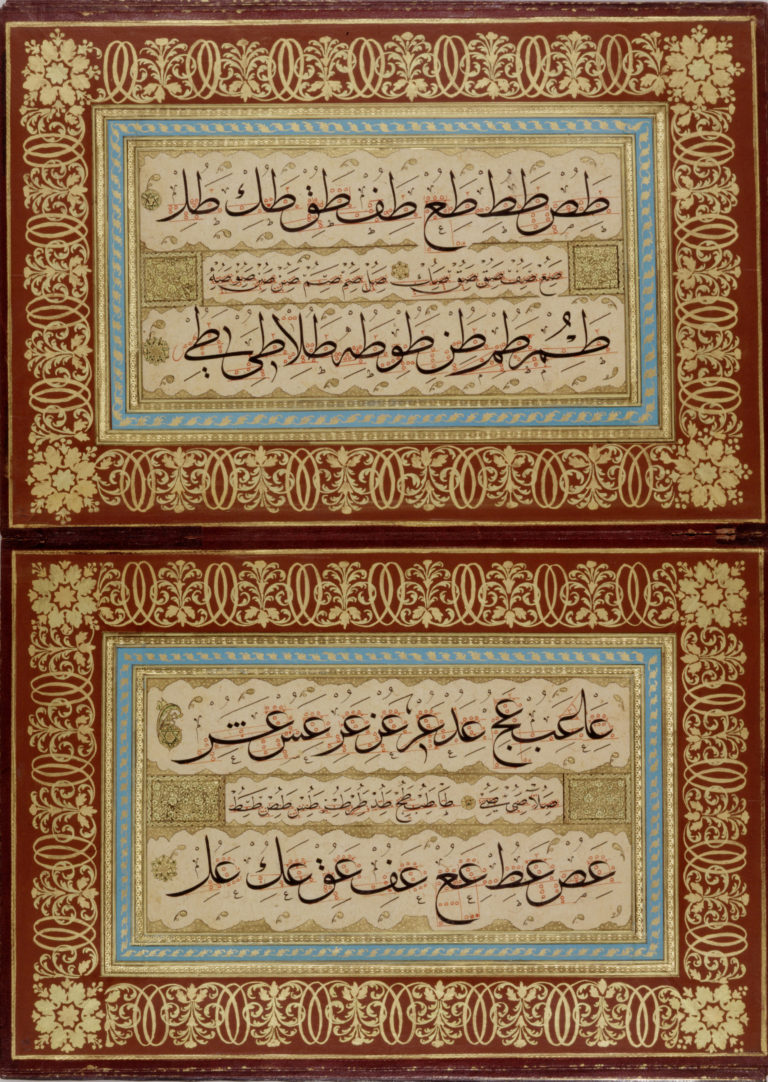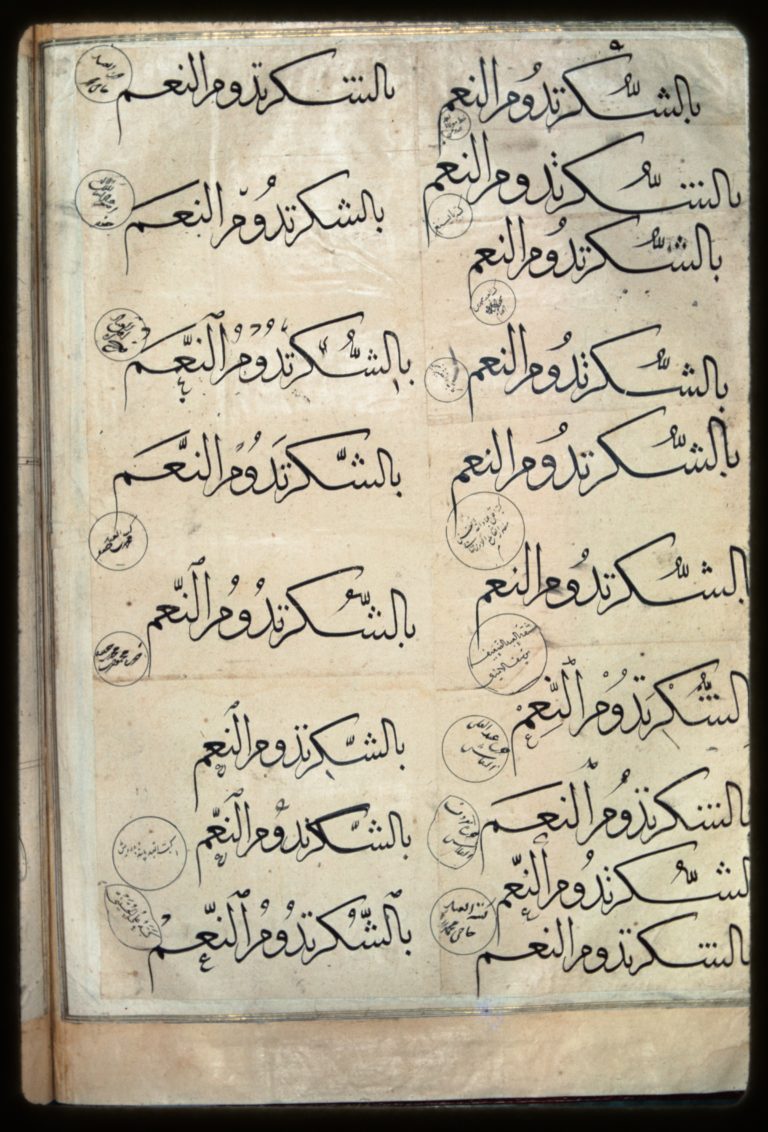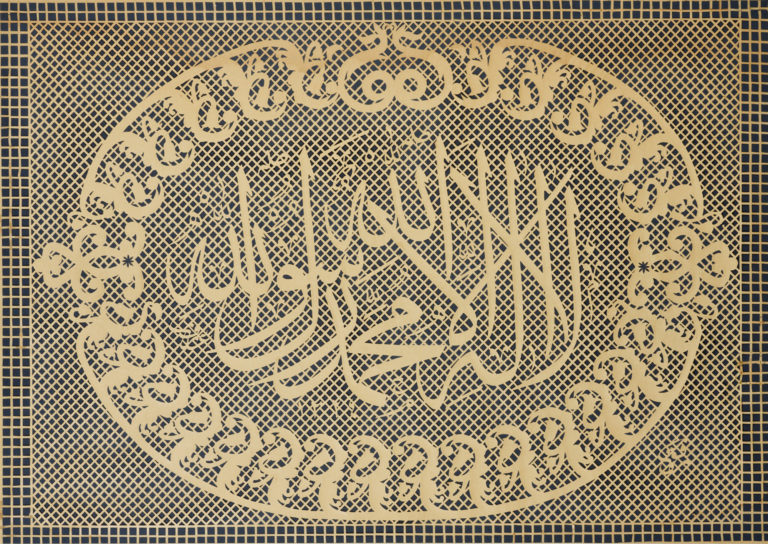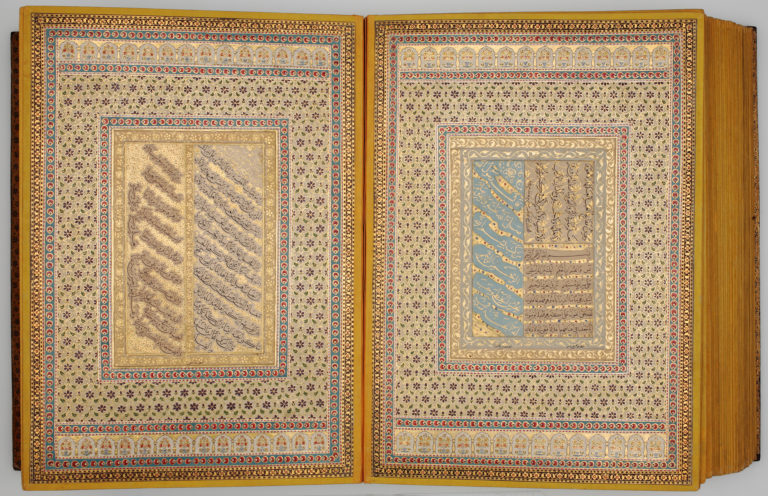Riqa‘
(Pronounced “rik-ah”; Turkish–Rika‘)
Meaning
- “Riqa‘ ” is derived from the Arabic noun, ruq’a, meaning “a patch or piece of cloth.” The script was named thus because it was often written on small pieces of paper to petition royalty
Uses
- In its early development, riqa‘ was used for writing letters, epics, stories and personal correspondence
- Used for official correspondence and documents
- Used for writing the final colophon of a book, showing the date and place of writing
Companion script
- Tawqi‘ is the larger script often used in conjunction with riqa‘.
Timeline
- Developed in the 10th century
- Refined by Şeyh Hamdullah in the 15th century
- Now obsolete, but it evolved into the Ottoman script called ijaza (Turkish– Icaze)
Distinctive characteristics
- Small version of tawqi‘
- Features rounded letter shapes
- Letters that don’t connect on the left are often connected in this script (unauthorized ligatures)
